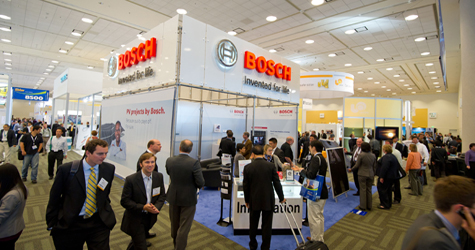Building-integrated photovoltaics (BIPV) currently make up a small but noticeable part of the world PV market.
NEW YORK,
Reportlinker.com announces that a new market research report is available in its catalogue:
Building-Integrated Photovoltaics (BIPV): Technologies and Global Markets
Building-integrated photovoltaics (BIPV) currently make up a small but noticeable part of the world PV market. The global market was valued at 1,201 megawatts in 2010 and is expected to increase at a 56% compound annual growth rate (CAGR) to reach a capacity of 11,392 megawatts in 2015.
BIPV roofing is the largest near- and mid-term market segment. The global market for BIPV capacity in the roofing sector was 404 megawatts in 2010 and is expected to reach 3,197 megawatts in 2015, a compound annual growth rate (CAGR) of 51%.
The market for architectural fabrics may be very large and expanding, but the rate of adoption of BIPV elements will be slow for a period of time. This sector had a capacity of .2 megawatts in 2010 but is expected to increase at a 670% compound annual growth rate (CAGR) to reach a capacity of 5,439 megawatts in 2015.
INTRODUCTION
The world of building-integrated photovoltaics can be somewhat of a surprise on the order of first learning that the walls and floors of one’s own house are populated with conductive wire, conduit and pipe. The sheer number of buildings, for all purposes, can be enumerated in the billions in the aggregate worldwide.
That many buildings cover a tremendous area of land. Utility-scale PV arrays in deserts and brownfields are one way to drive a gigawatts-scale solar industry, but these types of projects are hitting the same transmission/distribution walls that wind farms hit two decades ago. Thus, the built-environment real estate is an attractive niche that allows for mass manufacturing without the concomitant challenges that occur when all the eggs must fit into a few baskets.
Buildings and neighborhoods have characters all their own that BIPV must fit into. The attractiveness of a BIPV capacity has several facets:
Energy consumed on-site
Little transmission loss
No land requirement
Use of building to get the PV material off the ground
Architectural design element
Green is built into the building
Modern, ecological statement by the building
Reduction in need for other building materials
PV material is protected, no fences needed.
The world market for photovoltaics (PV) entered a period of sustained double-digit growth in the 21st century. This growth has been driven by an accelerating expansion in production quantities of all components, and, for the most part, an erratic, concomitant slow decline in price at many points of the value chain (U.S. Bureau of Economic Analysis 2009).
The trend toward lower prices in the market is being strongly encouraged by the entry of many, some of which are very large Chinese manufacturers into the PV industry and a growing reluctance of governments, with a few notable exemptions, to continue to legislate large financial incentives for PV installations or require their citizens to shoulder the burden.
A dominant characteristic of the market for PV products is that every price decline opens new market niches. A second factor that leads to new sales sectors is that new technologies lead to new applications of PV technologies. The combination of lower costs and an expanding underexploited niche are major factors in the imminent, long-expected explosive growth of a very large and diverse set of applications: building-integrated photovoltaics (BIPV).








